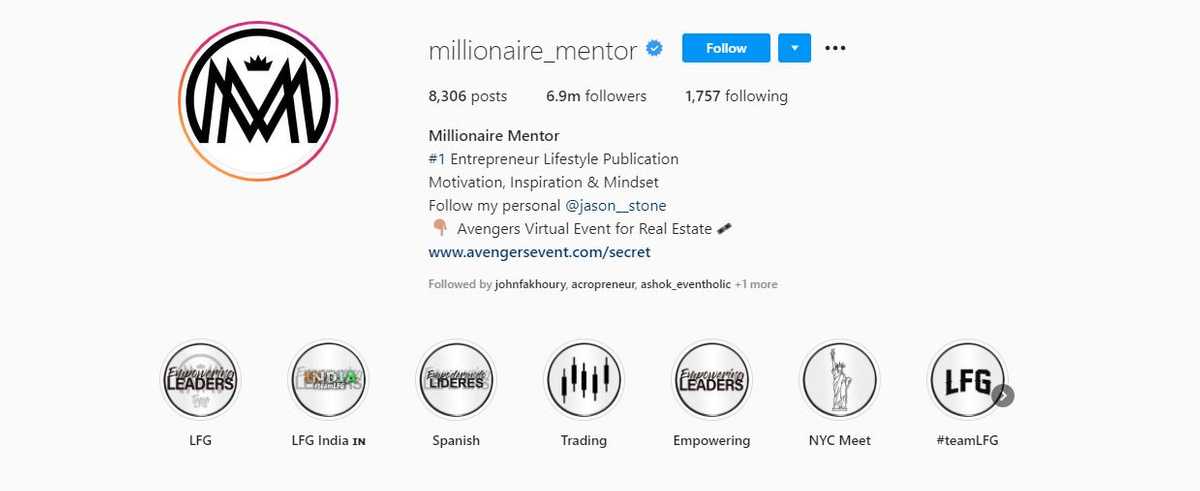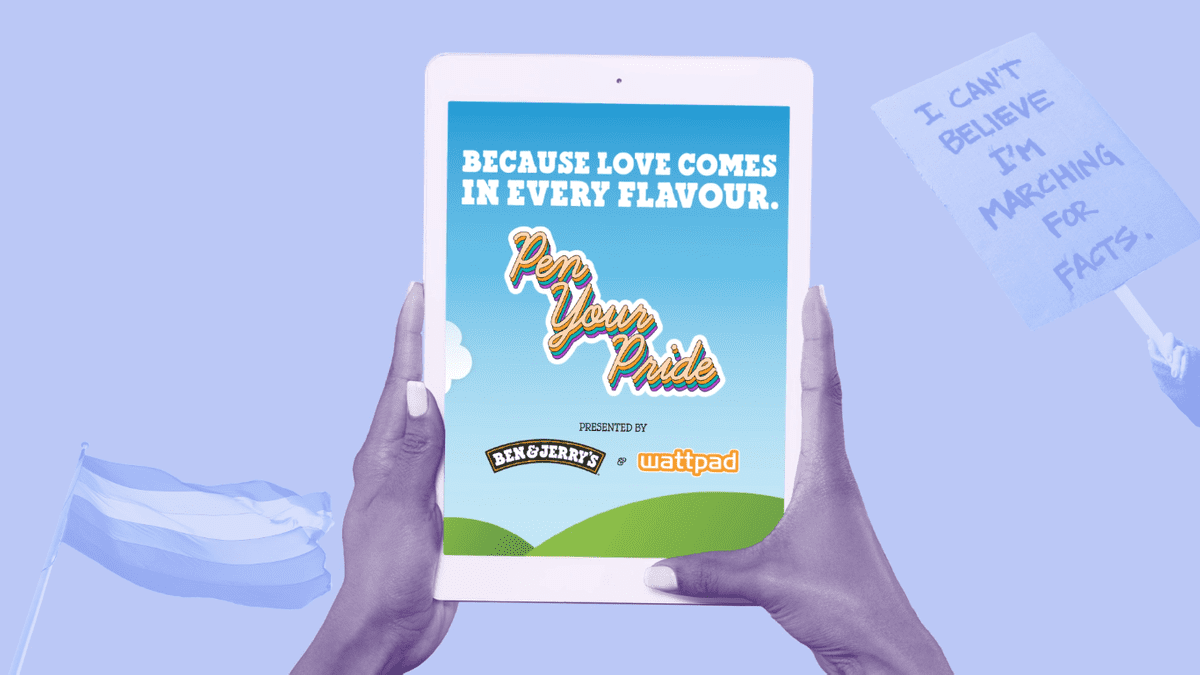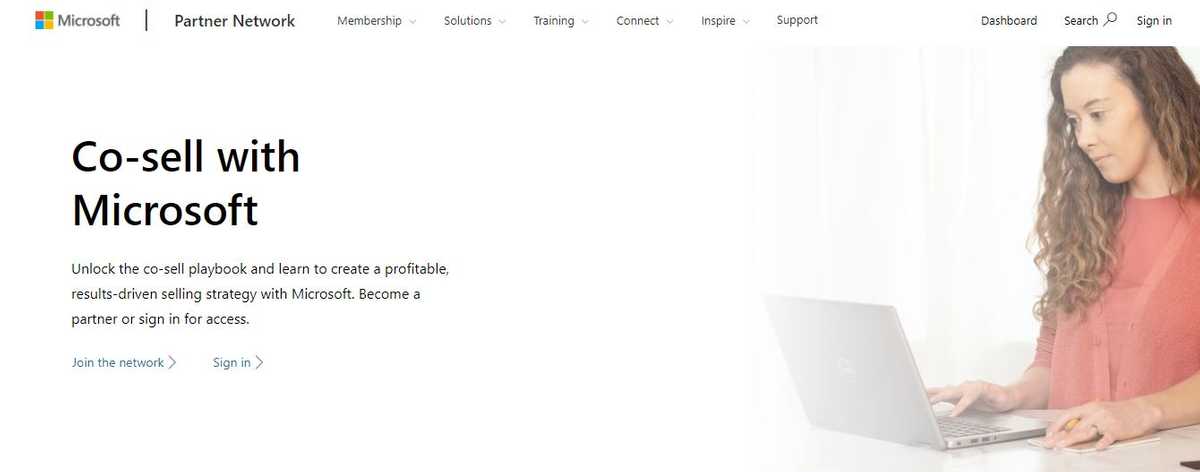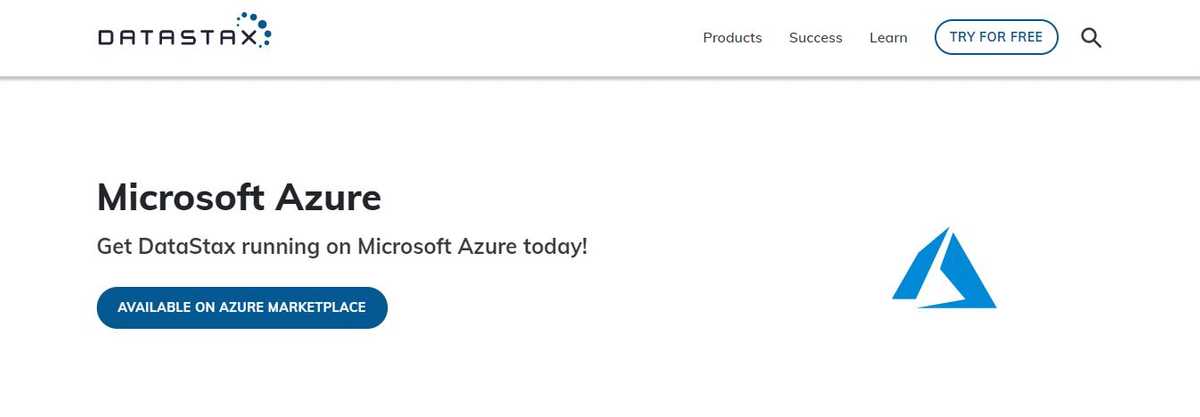112 stats you never knew about strategic partnerships
- Publication date
- Author
- Imogen Beech
- Reading time
- 18 minute read
Updated: 22nd June 2023
If you’re wondering what all the fuss is about strategic partnerships, wonder no more. We’ve compiled a selection of the most interesting, absurd and downright amazing stats about all the different types of strategic partnerships that we could find from all over the web, to prove just how awesome partnerships really are.
Read away and prepare to be blown away... then, remember to book a demo with Breezy to see how our partner discovery engine can help you find the perfect strategic partners to help you grow your business.
Find thousands of relevant partnership opportunities (way!) more quickly and easily with Breezy.
Partnerships can be credited with generating high-growth businesses with more revenue than paid search. While the average business generates 18% of its revenue from paid search, high-maturity partnership programs generate 28%.
Source: Wolfgang Digital and Forrester report
In 2022, 82% of B2B business leaders planned to add to their roster of partners. At the same time, nearly 70% planned to boost their channel program budgets.
Source: Demand Gen 2022 Partner Marketing Benchmark Survey
With 75% of world trade flowing indirectly, channels, partnerships and alliances have become increasingly important.
Source: Forrester
High-growth brands are three times more likely to use marketing partnerships as part of their overall strategy than no-growth firms.
Source: Hinge 2020 High Growth Study
74% of shoppers in the US admit to visiting two or three non-retail websites before completing a purchase, while 16% say that they visit more than four.
Source: Business Insider
Not only are deals 53% more likely to close when there's a partner involved, but they close an impressive 46% faster too!
Source: Partner Hacker
94% of executives in the tech industry see innovation partnerships as a necessary strategy.
Source: Harvard Business Review
More than 75% of CEOs with businesses in the TMT sector rate partnerships as ‘important’ or ‘critical’ to their business. This figure increases to 83% for telecoms businesses and 81% for media.
Source: PWC
2,000 strategic alliances are currently formed every year, with that number growing by 15% each year as well.
Source: Strategic Alliances: Three Ways to Make Them Work
More than half (60-65%) of strategic partnerships fail, with common reasons including unrealistic expectations, failure to agree on objectives and lack of trust or communication. Read our piece about why strategic partnerships fail to find out more.
Source: The Art of Strategic Partnering: Dancing with Elephants
Even though partnerships are proven to be important, 73% of marketers consider managing partners to be a major challenge.
Source: Forrester
Two-thirds of B2B business leaders describe their channel programs as only somewhat effective, while 20% say that their efforts are not very effective or worse.
Source: Demand Gen 2022 Partner Marketing Benchmark Survey
Only 35% of companies state that recruiting partners is one of their top three capabilities – a worrying figure given the increasing importance of partnerships as a growth channel.
Source: Accenture
45% of executives believe that the biggest challenge when it comes to strategic partnerships is keeping them active and mutually rewarding.
Source: BPI Network
Despite the growing reliance on partnerships, 39% of companies don’t have a formal partner management strategy in place.
Source: BPI Network
The average partnership manager spends around 35% of their time on partner discovery and earns around £38K per year. That means businesses are spending around £13,300 and 584 hours on discovery per person, per year.
Source: Breezy partnership survey
A survey showed that 76% of business leaders believe ecosystems will be the main disruptor to current business models.
Source: Hubspot The State of Partner Ops and Programs 2022
It's estimated that at least a dozen sectors are reinventing themselves as vast ecosystems that sould drive a $60 trillion economy by 2025.
Source: McKinsey & Company
A whopping 96% of B2B leaders expect to increase revenue directly attributed to their partner ecosystems in 2022. 32% expect to see significant increases in their primary measures of channel program success, while 54% are confident they’ll see a marginal increase.
Source: Demand Gen 2022 Partner Marketing Benchmark Survey
A whopping 95% of Microsoft's commercial revenue comes through its partner ecosystem. Meanwhile, its ecosystem grows by a huge 7,500 partners every month!
Source: Forbes
84% of companies state that ecosystems are important to their strategy (read our guide to nailing your partner ecosystem strategy if you want to get in on the action). Meanwhile, 76% believe that in the next five years, ecosystems will cause business models to become unrecognisable.
Source: Accenture
92% of companies that haven’t mastered ecosystems are worried about sharing company assets, intellectual property and competitive advantage.
Source: Accenture
While 83% of digital ecosystems are a collaboration between partners from four or more industries, 53% involve partners from six or more!
Source: BGC
Out of the top 12 companies by market capitalisation, seven are ecosystem players. These are Amazon, Apple, Facebook, Microsoft, Alphabet (Google’s parent company), Alibaba and Tencent.
Source: McKinsey & Company
When executives share data within their ecosystems, 77% do so with restrictions due to concerns about data security.
Source: Accenture
Our partner intelligence and discovery platform can help you find thousands of partnership opportunities in minutes.
Affiliate marketing is a huge global industry that’s growing rapidly. It’s set to grow to approximately $14.3 billion in 2023 globally, and then to $15.7 billion by 2024.
Source: Influencer Marketing Hub Affiliate Marketing Benchmark Report 2023
Although publishers still generate the majority of their revenue from advertising, affiliate marketing is growing faster. Approximately 15% of the digital media industry’s revenue now comes from affiliate marketing.
Source: Business Insider
In the US, affiliate marketing drives as many e-commerce orders as email, with both channels accounting for 16% of e-commerce orders.
Source: Business Insider
Affiliate marketing is growing rapidly and consistently, with US affiliate marketing spend increasing by 10.1% each year.
Source: Digital Global
Interest in affiliate marketing rose more than 264% between 2020 and 2022.
Source: Influencer Marketing Hub Affiliate Marketing Benchmark Report 2023
PeerFly is the largest affiliate marketing network in the world, boasting more than 250,000 affiliate accounts (although only 75,000 of them are active). Together, they’re responsible for over 1 billion clicks and 8 million conversions.
Source: PeerFly
In the UK, retail is the biggest affiliate marketing sector, with a 43% share of the country’s yearly affiliate revenue. The next biggest is telecom at 24%, followed by media, travel and leisure at 16%.
Source: SaaS Scout
The US is by far the largest affiliate marketing country in the world, worth approximately $6.8 billion. Second is Japan, worth $3.3 billion.
Source: CHEQ
6% of Amazon’s 2.5 billion monthly online visits come from affiliates. Its affiliate program, Amazon Associates, is both the largest in the world (with a 20% market share in 2023) and one of the oldest, featuring in our selection of the best affiliate programs as well as in our guide to the history of affiliate marketing.
Source: CHEQ
The biggest proportion of affiliate marketers falls within the 35 to 44 age bracket, with this group taking up a 31.86% share. On the other hand, nearly 12% of affiliate marketers are aged 55 or over.
Source: Statista
27.8% of brands that engage in affiliate marketing work with bloggers to assist them. The next most popular affiliate channel is review sites, which are used by 18.7% of brands, followed by coupon sites, used by 14.8%.
Source: Influencer Marketing Hub Affiliate Marketing Report 2023
SEO is by far the highest-converting traffic source in affiliate marketing, with a conversion rate that’s 7x higher than any other form.
Source: Profit Social
For every pound spent on affiliate marketing in the UK, you get 16 back. This is in part thanks to the fact that brands using CPA only have to pay for promotions that convert (learn more in our guide to affiliate marketing).
Source: Awin
80% of sales generated from affiliate marketing are made by just 20% of affiliates. In other words, the majority of affiliate conversions are driven by just a small proportion of affiliate marketers.
Source: Practical Ecommerce
81% of brands use affiliate marketing, along with 84% of publishers.
Source: Awin
Across over 230 funding rounds on Crunchbase, affiliate marketing companies have raised more than $1.5 billion in funding.
Source: Crunchbase
42% of affiliate marketers promote between one and ten products, making this the most popular choice. Meanwhile, 23% of affiliates promote 11 to 20 products and only 7.5% promote 300 products or more.
Source: Hostingtribunal
The majority of brands (34%) claim that they spend between 21 and 40% of their marketing budgets on affiliate marketing. Meanwhile, 17% of brands say that they spend between 80 and 100% of their marketing budgets on this form of marketing.
Source: Awin
Influencer Jason Stone used social media to earn $7 million from affiliate marketing between June 2016 and June 2017.
Source: Entrepreneur

Affiliate marketing now drives more of the UK’s GDP than the whole of the country’s agriculture sector!
Source: Awin
Only 22% of Chief Marketing Officers (CMOs) believe they’ve mastered affiliate marketing. This makes it the area of marketing they know least about.
Source: Forbes
More than a third of marketers believe that affiliate marketing is one of the best ways to acquire new customers.
Source: National Retail Federation
Marketers that partner with publishers to distribute their branded content see a 50% higher brand lift on average, compared to those who publish content on their own.
Source: Neilsen
Millennials are 247% more likely to be influenced by blogs or social media, making them a prime target audience for content marketing partnerships.
Source: Marketing to Millennials
Although traditionally advertising is one of the largest expenditures of a marketing department, a striking 84% of millennials distrust it, cementing content marketing partnerships as an important alternative.
Source: ClickZ
Not only does content marketing cost 62% less than traditional marketing, it also generates 3x the volume of leads.
Source: Demand Metric
80% of business decision-makers would rather get company information from a series of articles rather than from an advertisement.
Source: Stratabeat
Around 11% of marketers say that ‘partnership posts’ are the most engaging type of social media content that their brand creates.
Source: Hubspot
34% of marketers believe that co-branding or co-marketing partnerships are the most effective way to increase a brand’s number of email subscribers.
Source: Ascend2
GoPro and Red Bull's co-branding partnership involved Felix Baumgartner jumping out of a helium balloon to shatter the ‘maximum vertical speed’, ‘highest exit (jump) altitude’ and ‘vertical distance of freefall’ world records. The jump was live-streamed to 8 million viewers, also setting a new record for YouTube (read more about it in our piece on co-branding examples).
Source: Red Bull

After seeing a co-branded campaign, 68% of consumers are able to make buying decisions without speaking to a sales representative.
Source: Partner Path
Ben + Jerry’s Canada partnered with Wattpad on a co-branded write-a-thon. The partnership successfully boosted perception of the brand and its involvement with the LGBTQ+ community by 142.8%.
Source: Wattpad

77% of companies who’ve taken part in co-selling partnerships have seen a direct or indirect increase in profits.
Source: Concur
Microsoft formed 9,000 partnerships within one year of setting up its successful co-seller partner program. It also made $8 billion in partner revenue in the program’s first two years alone.
Source: CRN

Almost nine out of 10 companies say that co-selling requires less time and financial commitment than traditional re-seller models.
Source: Concur
One of the biggest difficulties with channel partnerships is the disconnect between the multiple systems that need to work together. In fact, only 43% of channel marketers report into the marketing or sales department.
Source: Forrester
Out of the companies who use co-seller models, 63% do so to give their employees more time to focus on other tasks. Meanwhile, 59% do so to make use of more highly skilled sales and marketing support.
Source: Concur
DataStax used lead account mapping as part of its co-selling partnership with Microsoft to grow its pipeline by 140%.
Source: Microsoft

Book a demo for Breezy to level up your partner discovery.
Sponsorship is the second-largest marketing communications spend for most brands, with just media coming ahead of it. Sponsorship frequently accounts for between 11% and 18% of a brand’s total marketing budget.
Source: World Federation of Advertisers
Research shows that TV sponsorships drive long-term brand awareness, so perhaps it’s not surprising that since 2010, they’ve accounted for 5% of TV ad spend.
Source: WARC
Ronaldo signed a lifetime endorsement deal with Nike, which will make him arguably the richest of all Nike athletes in the world (not to mention the fact that he also has other endorsements from brands such as EA Sports and American Tourister).
Source: Man of Many

This past season, the NFL managed to collect a record amount in sponsorship fees, with NFL sponsor revenue hitting $1.88 billion. This was a 4% increase from the previous year - a smaller increase than the 12% it grew by between 2020 and 2021. Sponsorship money makes up 10% of NFL revenue.
Source: Forbes
33% of mid-to-senior-level marketers allocate 21% or more of their marketing budget towards sponsoring or exhibiting at events.
Source: Bizzabo
Wilson is the racket sponsor for 40% of the top 30 male tennis players and 34% of the top 30 female tennis players.
Souce: Score and Change

In 2019, 80% of the value gained from sports sponsorship came from TV advertising. However, that figure is expected to fall to less than 73% by 2024.
Source: Statista
In 2022, the worldwide product placement market is estimated to have reached $26.2 billion - an increase of over 14% compared with the year before.
Source: E-Commerce Nation
60% of moviegoers feel more positive about brands that they recognise from a product placement spot.
Source: Cooking Styles of the Rich and Famous
On average, consumers are sold 12.61 products in every movie, often without ever even realising it. The Office (US) features the most product placements of any TV show, with 1,448 product placements. Seinfeld comes in second with 867 placements.
Source: Advanced Television
43% more viewers recognise brands from product placements on emotionally engaging programs, compared with films that could be described as ‘eye candy’.
Source: Cooking Styles of the Rich and Famous
The inclusion of an Etch-A-Sketch in Toy Story increased sales of the toy by 4,000%, while sales of Mr Potato Head toys increased by 800%.
Source: Hollywood Branded

Product placement in the US accounts for a whopping 56.4% of the global market.
Source: Cision
A massive 75% of broadcast-network shows feature product or brand placements of some kind. In fact, TV attracts almost 71.4% of all paid placements.
Source: Priceonomics
Nike has more product placements across movies and TV than any other brand, at 3,000.
Meanwhile, MacBook has the second highest number of placements with 2,145, and iPhone comes in third with 1,626.
Source: Advanced Television
68% of product placements last for five seconds or less. However, the average duration of product placement on camera is 6.2 seconds. Riddle that one!
Source: Cooking Styles of the Rich and Famous
After paying $1 million for a product placement of Reese’s Pieces in E.T., Hershey’s sales went up 65%. Funnily enough, they only got the spot after M&M’s pulled out, having no idea that E.T. would become one of the highest-grossing films of all time.
Source: Forbes

49% of North Americans take action after seeing a product placement, while 52% state that they trust product placement ads.
Source: Statista
72% of consumers who are online in the US take part in at least one loyalty program.
Source: HighNote
71% of Gen X, 70% of Millennials, 63% of Baby Boomers, and 62% of Gen Z say that they might choose one brand over another because of the presence of a loyalty program.
Source: Oracle
In 2021, 68% of consumers agreed that their loyalty was harder to maintain than ever before. This was up from 64% in 2020.
Source: Clarus Commerce
People belong on average to 14.8 loyalty program memberships. However, they’re typically only active in 6.7 of them.
Source: Bond
Consumers are increasingly willing to pay for premium loyalty programs in order to get the benefits they want from retailers (like free delivery). 76% of consumers would pay for a premium loyalty program.
Source: Clarus Commerce
60% of loyalty program members express an interest in partnerships that they’re introduced to through their programs.
Source: Bond
Word of mouth is responsible for 20-50% of all purchasing decisions. It has the greatest influence when consumers are buying relatively expensive products or buying a new product for the first time.
Source: McKinsey
Customers who’ve come through referrals bring in profit margins that are around 25% higher.
Source: AMA Journal of Marketing
Customers who’ve been referred to a brand are a massive four times more likely to make a purchase.
Source: Extole
A recommendation from a trusted friend is up to 50x more likely to result in a purchase than a low-impact recommendation.
Source: McKinsey
92% of consumers around the globe claim to trust earned media (such as recommendations from friends and family) above all other forms of advertising.
Source: Neilsen
Customers acquired through referrals have a retention rate that’s 37% higher.
Source: Extole
88% of people trust online reviews penned by unknown consumers as much as they trust recommendations from personal contacts.
Source: BrightLocal
While 49% of consumers depend on influencer recommendations, 40% have purchased a product after seeing it on Twitter, YouTube or Instagram.
Source: Influencer Orchestration Network
75% of marketers now use influencers as a marketing tool, with 86% of those aiming to increase brand awareness.
Source: Chief Marketer
Unfortunately, while 83% of satisfied customers are willing to refer you to their friends, only 29% of them actually do!
Source: Texas Tech University
Not only do 86% of women say that they use social media for purchasing advice, but 45% of women claim to be more active on social media than they were two years ago.
Source: Digital Marketing Institute
Facebook is the most influential social media channel, influencing 19% of purchase decisions.
Source: Digital Marketing Institute
58% of people are more likely to trust a brand that they’ve seen a friend or family member interact with on Facebook, demonstrating the real power of advocacy.
Source: Wolfgang Digital
91% of brands who enter charity partnerships cite brand reputation as their primary motivation.
Source: NPC
65% of millennials would turn down a job if their employer didn’t have a strong CSR policy. With millennials due to make up 75% of the workforce by 2025, charitable partnerships are becoming increasingly important for employers.
Source: Cone Communications
More than half of customers in the UK (and 75% of Gen Z) want companies to take a stand on issues they’re passionate about. At the same time, six in ten consumers under the age of 30 consider a brand’s ethical values carefully before buying their products.
Source: Accenture
40% of businesses claim that partnerships with charities are important to their business agenda, while a third state that partnering with charities is ‘very important’ to them.
Source: The Guardian
70% of B2B decision-makers say that they’ve outsourced key services to third parties. Meanwhile, just 25% claim never to have done so in any area of their organisation.
Source: YouGov
High growth firms are more likely to employ outside talent in the form of agencies, firms, and freelancers. 54.7% of high-growth brands outsourced to make website improvements, while 45.8% outsourced graphic design.
Source: Hinge 2023 High Growth Study
In the UK, the most commonly outsourced function is IT support. 34% of British businesses want to hand it over to third parties.
Source: YouGov
In 2023, 83% of small businesses plan to maintain or increase their spending on outsourced business services.
Source: Clutch
A study revealed that grocery and drug retailers who focused on improving supplier collaboration saw a whopping 20% increase in revenue, directly or indirectly.
Source: Coresite
65% of companies say that they're becoming more collaborative and strategic with suppliers when it comes to procurement.
Source: Oxford Economics
25% of joint venture partnerships don’t meet or exceed either partner’s expectations but still benefit all the companies involved.
Source: McKinsey & Company
47% of managers cite alignment on objectives as a core reason for joint venture partnership success.
Source: McKinsey & Company
Lack of internal communication and trust are cited by 38% of managers as a key reason for the failure of joint venture partnerships.
Source: McKinsey & Company
--
Phew! Did you get through all of those? If you did, you’re probably itching to turbocharge your own hunt for partners who can help you drive your business to new levels of success.
If that’s the case, remember to book a demo with Breezy. It’s the easier, quicker way to uncover and sort through thousands of relevant partnership opportunities. Enjoy!
Learn how Breezy can help you uncover partnership opportunities (way!) more quickly.
Imogen is a copywriter and content writer with over two years’ experience writing about the exciting world of strategic partnerships, as well as running her own business. She loves learning about new topics as she writes, and has enjoyed penning articles on industries ranging from mortgages to events, theatre to home improvements and everything in between.
View more by Imogen Beech